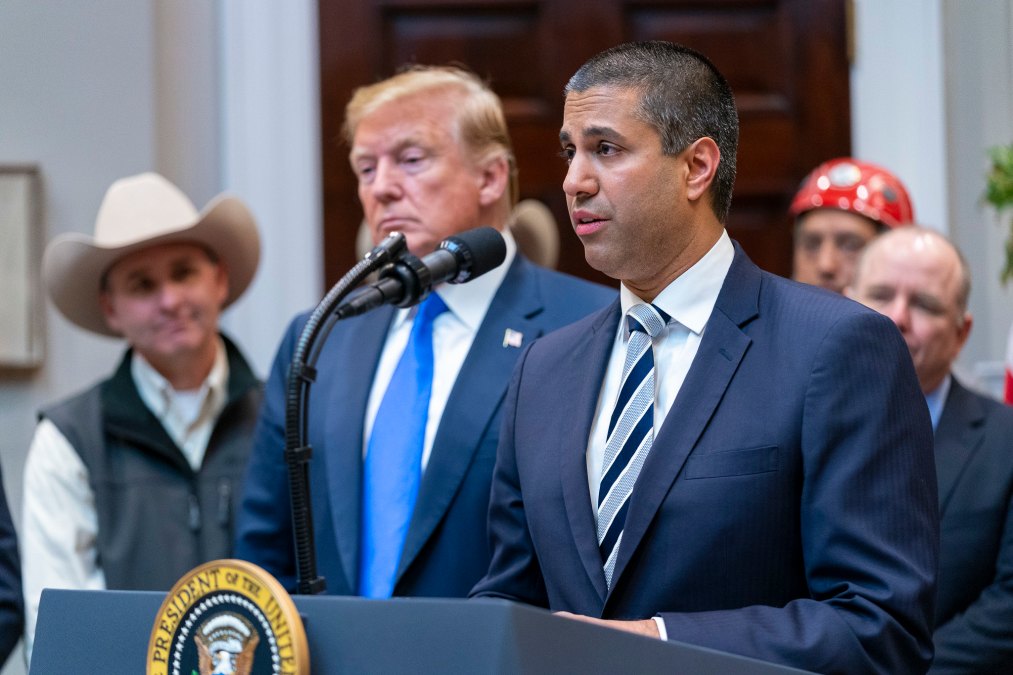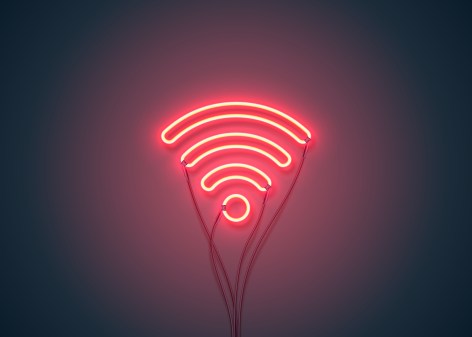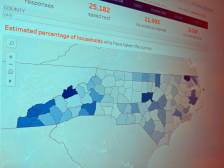FCC announces $9 billion 5G auction to replace Mobility Fund Phase II

A $9 billion plan announced on Wednesday to expand 5G coverage across the country confirmed long-held suspicions that coverage maps provided to the Federal Communications Commission by wireless carriers have “likely overstated” their coverage areas.
The new plan will replace Mobility Fund Phase II, the FCC’s current plan to disperse $4.53 billion dollars to wireless carriers over 10 years to expand 4G coverage in rural areas. FCC Chairman Ajit Pai did not explain in the announcement how the 4G funding will roll over into the new plan, but he did make one point clear: The coverage maps provided to the FCC by nationwide carriers like Verizon, T-Mobile and U.S. Cellular are not accurate.
“Through the investigation, staff discovered that the MF-II coverage maps submitted by Verizon, U.S. Cellular, and T-Mobile likely overstated each provider’s actual coverage and did not reflect on-the-ground performance in many instances,” says an FCC investigation report also released alongside Pai’s statement.
The investigation report concluded that just 62.3 percent of 25,000 broadband speed tests conducted by FCC staff around the country matched the download speeds reported by carriers. Tests done on U.S. Cellular’s network matched just 45 percent of expected download speeds, and 16 percent of tests done on Verizon’s network revealed no 4G coverage at all, despite its map claiming to service those areas.
The report was the culmination of the FCC’s year-long look into the Mobility Fund Phase II challenge process, which was designed to grant states and lawmakers’ offices the ability to dispute reported 4G coverage levels. The FCC halted the challenge process last December to begin the investigation, but did not announce any plans to move away from the Mobility Fund dispersion. Portions of the $4.53 billion were to be given to carriers that agreed to expand coverage in these unserved places, if the challenges proved accurate.
The challenge process — described as “archaic” by state employees following it using personal devices — gathered nearly 20 million independent speed tests from people across the country. State employees in Vermont drove 7,000 miles in a matter of months in 2018 to show the inaccuracy of the maps, and officials in North Carolina, West Virginia, New York and more planned on filing further challenges. Federal and state lawmakers have also introduced a slate of bills this legislative session targeted at improving the FCC’s data-collection process.
The problem with the Mobility Fund Phase II challenge process, said FCC spokesperson Mark Wigfield, is that it was meant to correct small errors, not “generally unreliable” maps.
“The staff report released today on the Mobility Fund II data investigation recommends discontinuation of the challenge process based on the significant problems identified with the provider LTE maps, which the challengers’ input is unlikely to correct sufficiently,” Wigfield told StateScoop.
In addition to recommending the termination of the Mobility Fund Phase II challenge process, the report recommended that the FCC prioritize the verification of carrier-submitted coverage maps, namely by assembling an auditing team with “the requisite expertise and resources” to examine the data.
The report does not make clear, however, how entities that challenged the initial carrier coverage maps will benefit from the new plan — or how 5G will solve the problem.
“With 5G, you’re working with millimeter-wave technology that doesn’t have nearly the range that a standard cellular transmitter would have with 4G LTE,” said Tyler Cooper, a broadband policy expert at BroadbandNow.com. “You’re talking about a much bigger infrastructure project all of a sudden, and we’re already struggling with the one we have.”
Wigfield said rulemaking on the $9 billion reverse 5G auction will begin early next year. The FCC is set to hold its third and largest 5G auction ever on Dec. 10.
The fifth-generation wireless technology relies on deploying cellular infrastructure every hundred yards or so, and has been increasingly common in urban areas across the U.S. But when connecting rural areas where infrastructure and buildings might be several miles apart, it doesn’t make sense, Cooper said.
“It’s not feasible,” Cooper said. “You’re talking about signal propagation of a couple hundred feet at best.”
It’s more likely, Cooper said, that the new plan is a response to international competition to expand 5G networks. Internet-connected sensors and infrastructure that serve as the backbone of “smart cities” largely requires 5G service to collect and deliver data. Pai called 5G the “network of tomorrow” in his statement, but according to a new report from Broadbandnow.com, just 25 percent of consumers in the U.S. have access to 5G, while 86 percent in China can access a 5G network, which is advertised to be as much as 100 times faster than 4G.
For all those reasons, Cooper said, Pai’s announcement is more of a branding shift than a fleshed-out policy.
“Ambitious is the right word,” Cooper said.






